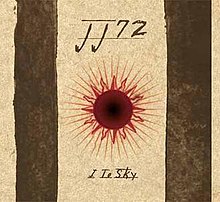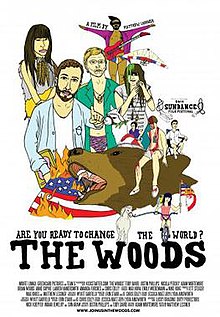홀로미코타
Holomycota| 홀로미코타 | |
|---|---|
 | |
| 뉴클리어 | |
| 과학적 분류 | |
| 도메인: | 진핵생물 |
| (순위 미지정): | 아모르페아 |
| (순위 미지정): | 오바조아 |
| (순위 미지정): | 오피스토콘타 |
| (순위 미지정): | 홀로미코타 Liu et al., |
| 그룹[1] | |
| 동의어 | |
| |
홀로미코타 또는 누클레미케아는 홀로조아의 자매로서 기본적인 오피소콘트 분류군이다.그것은 Cristidiscoidea와 곰팡이 왕국으로 구성되어 있다.nucleariids의 홀로 미코타의 초기 혈통 그 지위, 단세포의 단서phagotrophic amoebae,[3]은 동물과 말해 독립적으로 흔한 단세포 조상이osmotrophic 생활 방식(한 구로 특징 중)나중에 이 eukaryo의 발산에서 비롯되었다고 하고 복잡한 다세포 활동을 인수할 것을 제안했다.tic 계보오피소스포리디아는 최근 제안된 분류학 그룹으로, 세 그룹의 내기생충인 상피동물,[4][5] 미포리디아, 크립토미코타를 포함한다.
에서 키틴은 그들의 생활의 몇가지 단계 적어도 cycle,[5]관찰되었다 Rozella(Cryptomycota)가장 빠른 것이 diverging 곰팡이 속은 키틴질의. 세포 벽( 다른 곰팡이 특징)과 osmotrophy 유래에서 공통적인 조상의 블라스토 클라 디아 균류와 호상 균류, 아직도 간직하고 있는 일부 조상의 특성과 a세인트동물원에서 [6]편모를 발견했어요균사체의 특징적인 성장을 가진 균류 그룹인 Zoopagomycota, [6]Mucoromycotina 및 Dikarya는 700Mya까지의 공통 조상에서 유래했다. Zoopagomycota는 대부분 동물이나 다른 균류의 병원체이며, Mucorycotina는 기생충, 사포트로프로프 또는 외근균을 포함한 보다 다양한 그룹이다.[5]Dikarya는 Ascomycota와 Basidiomycota를 수용하는 그룹으로 기술된 균류의 [6]약 98%를 차지한다.이 풍부한 다양성 때문에, Dikaria는 균사체 또는 단세포 효모에서부터 [6]버섯으로 널리 알려진 복잡한 다세포 균류까지 형태학적으로 매우 다른 그룹을 포함합니다.복잡한 다세포성을 가진 동물과 육지 식물과는 달리, 추정된 계통발생적 관계는 곰팡이가 아스코마이코타와 담자균의 [7]진화를 따라 여러 번 다세포성을 획득하고 잃었음을 나타냅니다.
계통발생학
Philippe Silar와[8] "The Mycota:기초 [9][10]및 응용 연구를 위한 실험 시스템으로서의 곰팡이에 대한 포괄적인 연구.홀로미코타 나무는 테더수 등을 따르고 있다.[11][12]
| 오피스토콘트 |
| ||||||||||||||||||||||||||||||||||||||||||||||||||||||||||||||||||||||||||||||||||||||||||
레퍼런스
- ^ Adl, Sina M.; Simpson, Alastair G. B.; Lane, Christopher E.; Lukeš, Julius; Bass, David; Bowser, Samuel S.; Brown, Matthew W.; Burki, Fabien; Dunthorn, Micah; Hampl, Vladimir; Heiss, Aaron; Hoppenrath, Mona; Lara, Enrique; Le Gall, Line; Lynn, Denis H.; McManus, Hilary; Mitchell, Edward A. D.; Mozley-Stanridge, Sharon E.; Parfrey, Laura W.; Pawlowski, Jan; Rueckert, Sonja; Shadwick, Laura; Schoch, Conrad L.; Smirnov, Alexey; Spiegel, Frederick W. (2012). "The Revised Classification of Eukaryotes". Journal of Eukaryotic Microbiology. 59 (5): 429–514. doi:10.1111/j.1550-7408.2012.00644.x. PMC 3483872. PMID 23020233.
- ^ Brown MW, Spiegel FW, Silberman JD (December 2009). "Phylogeny of the "forgotten" cellular slime mold, Fonticula alba, reveals a key evolutionary branch within Opisthokonta". Mol. Biol. Evol. 26 (12): 2699–709. doi:10.1093/molbev/msp185. PMID 19692665.
- ^ López‐Escardó, David; López‐García, Purificación; Moreira, David; Ruiz‐Trillo, Iñaki; Torruella, Guifré (2017-08-12). "Parvularia atlantis gen. et sp. nov., a Nucleariid Filose Amoeba (Holomycota, Opisthokonta)". Journal of Eukaryotic Microbiology. 65 (2): 170–179. doi:10.1111/jeu.12450. ISSN 1550-7408. PMC 5708529. PMID 28741861.
- ^ Karpov, Sergey; Mamkaeva, Maria A.; Aleoshin, Vladimir; Nassonova, Elena; Lilje, Osu; Gleason, Frank H. (2014). "Morphology, phylogeny, and ecology of the aphelids (Aphelidea, Opisthokonta) and proposal for the new superphylum Opisthosporidia". Frontiers in Microbiology. 5: 112. doi:10.3389/fmicb.2014.00112. PMC 3975115. PMID 24734027.
- ^ a b c Berbee, Mary L.; James, Timothy Y.; Strullu-Derrien, Christine (2017-09-08). "Early Diverging Fungi: Diversity and Impact at the Dawn of Terrestrial Life". Annual Review of Microbiology. 71 (1): 41–60. doi:10.1146/annurev-micro-030117-020324. PMID 28525299.
- ^ a b c d Stajich, Jason E.; Berbee, Mary L.; Blackwell, Meredith; Hibbett, David S.; James, Timothy Y.; Spatafora, Joseph W.; Taylor, John W. (2009-09-29). "The Fungi". Current Biology. 19 (18): R840–R845. doi:10.1016/j.cub.2009.07.004. PMC 2913116. PMID 19788875.
- ^ Nguyen, Tu Anh; Cissé, Ousmane H.; Wong, Jie Yun; Zheng, Peng; Hewitt, David; Nowrousian, Minou; Stajich, Jason E.; Jedd, Gregory (2017-02-08). "Innovation and constraint leading to complex multicellularity in the Ascomycota". Nature Communications. 8: ncomms14444. Bibcode:2017NatCo...814444N. doi:10.1038/ncomms14444. PMC 5309816. PMID 28176784.
- ^ Silar P (2016). Protistes Eucaryotes: Origine, Evolution et Biologie des Microbes Eucaryotes. HAL. p. 462. ISBN 978-2-9555841-0-1.
- ^ Esser K (2014). The Mycota VII A: Systematics and Evolution (2nd ed.). Springer. p. 461. ISBN 978-3-642-55317-2.
- ^ Bass, David; Czech, Lucas; Williams, Bryony A. P.; Berney, Cédric; Dunthorn, Micah; Mahé, Frederic; Torruella, Guifré; Stentiford, Grant D.; Williams, Tom A. (2018-04-28). "Clarifying the Relationships between Microsporidia and Cryptomycota". Journal of Eukaryotic Microbiology. 65 (6): 773–782. doi:10.1111/jeu.12519. ISSN 1066-5234. PMC 6282948. PMID 29603494.
- ^ Tedersoo, Leho; Sánchez-Ramírez, Santiago; Kõljalg, Urmas; Bahram, Mohammad; Döring, Markus; Schigel, Dmitry; May, Tom; Ryberg, Martin; Abarenkov, Kessy (2018). "High-level classification of the Fungi and a tool for evolutionary ecological analyses". Fungal Diversity. 90 (1): 135–159. doi:10.1007/s13225-018-0401-0. ISSN 1560-2745.
- ^ Lopez-Garcia, Purificacion; Volcker, Eckhard; Sebe-Pedros, Arnau; Burns, John; Karpov, Sergey A.; Moreira, David; Grau-Bove, Xavier; Torruella, Guifre (2018-08-17). "The aphelid-like phagotrophic origins of fungi". bioRxiv: 233882. doi:10.1101/233882.




